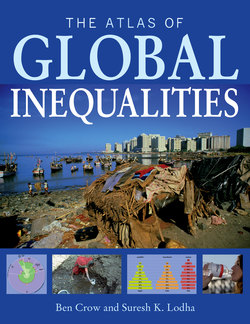Читать книгу The Atlas of Global Inequalities - Ben Crow - Страница 16
На сайте Литреса книга снята с продажи.
ОглавлениеR Most debates about global inequality focus on income inequality. National incomes can be measured using Gross Domestic Product – the total of goods and services produced in that economy – or Gross National Income (GNI), which includes income earned outside the country. These are measures of output or the value of production, not wages, but when divided by the number of people in the country they roughly equate to the average individual’s ability to buy goods, to their standard of living. Combining this with data on income distribution within a country creates a powerful picture of economic inequalities. Income inequality between countries grew in the last 200 years as some countries industrialized. Industry produces cheaper goods and pays better wages than farming. Until the beginning of the 19th century, income (GDP
Income
The Gini index measures the degree to which the distribution of wealth within a country is different from a perfectly equal distribution. The higher the index, the greater the inequality.
The most populous countries in the world, China and India, have huge populations of extremely poor people. Even the income of the richest decile in these poorer countries is dwarfed by the income of more than half of people in the USA.
16
